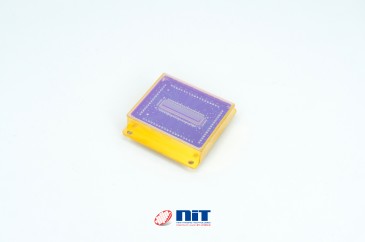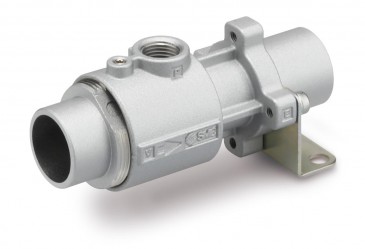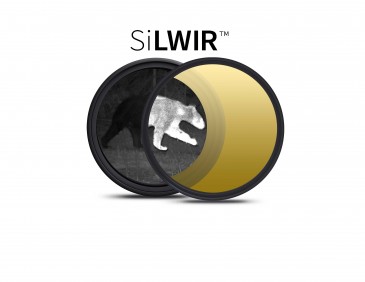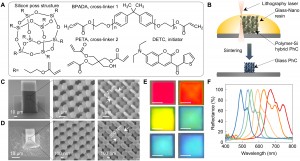
The CoaXPress (CXP) standard is a camera-to-computer interface that has dominated the high speed vision systems market over the past several years. The result of work performed initially by a consortium of companies including Adimec, EqcoLogic, Active Silicon, Aval Data, NED and Components Express, the draft CoaXPress interface specification became an official JIIA standard in January 2011 and a world standard in March 2011. Since then, more companies including Vieworks, Mikrotron, Euresys, and Optronis have joined the CoaXPress technical committee, and the number of CoaXPress products is growing.
The beauty of the CoaXPress technology is that it enables high-speed serial data from a machine vision camera to be transmitted over coaxial cable to a frame grabber in a PC. What is more, the asymmetric point to point serial communication standard is also scalable over single or multiple coaxial cables in addition to supporting a lower speed uplink for communications and control.
The original 1.0 version of the standard (as well as Version 1.1 of the standard released in April 2013, which included the support of new DIN connectors in addition to the existing BNC connectors, and the 1.1.1 version introduced in December 2015 which had a limited number of changes to clarify some points in the 1.1 specification) supports a data rate from a camera to a frame grabber of up to 6.25Gbit/sec over a single 75 Ohm coaxial cable. However, because CoaXPress is a scalable interface, many cables can be used to increase the camera to computer bandwidth further in increments of 6.25Gbit/sec per channel.
CoaXPress connectors: Micro-BNC, BNC and DIN connectors on cables, frame grabber and camera. Image courtesy: Active Silicon.
In addition to providing a high-speed serial camera to frame grabber down connection at up to 6.25Gbit/sec, the current CoaXPress standard also supports a low-speed serial (frame grabber to camera up connection) at 20.83Mbit/sec, as well as enabling power to be provided from the frame grabber, host computer or external power supply to a device such as a camera up to 13W per cable. A dedicated high-speed connection from host to device is also allowed for high speed triggers and camera control, although this connection does not support power. Both the up connection and down connection use 8B/10B code that maps 8-bit data to 10-bit data to achieve DC balance on the connection, while also allowing clock recovery by ensuring regular transitions.
Speed up
Despite its speed, the CoaXPress technical committee is not resting on its laurels. According to Chris Beynon, the Chief Technical Officer of CoaXPress frame grabber vendor Active Silicon and Technical Chair of the standard, this year is set to see Version 2.0 of the specification soon ratified, a move that will support even faster data transfer rates as well as a host of other enhancements. The result will be that the CoaXPress specification will not only further augment the appeal of the interface for those system integrators who need to run their systems faster, but also attract new users who are looking to implement a cost effective system at lower speeds.
More specifically, the 2.0 version of the CoaXPress standard adds two additional speeds while retaining backward compatibility to CoaXPress 1.1.1. While the older CoaXPress limited users to CXP-6 speeds of 6.25Gbits/sec, version 2.0 builds on that, introducing two new speeds -- CXP-10, which supports a data rate of 10Gbits/sec and CXP-12, which supports a data rate of 12.5Gbits/sec. Using four such CXP-12 links from a camera to a single frame grabber, a user would now be able to achieve a transfer rate of 4800MByte/second. Another way of looking at that would be that it can enable a 10-bit 12Mpixel area-scan camera to transfer more than 300 images per second, or image data from an 8-bit 16k line scan sensor to be transferred at 300,000 lines/sec. On the hardware front, the new standard also specifies a new Micro-BNC connector which supports the new higher speeds.
As Donal Waide, the Director of Sales of CoaXPress frame grabber vendor BitFlow notes, the new specification now also defines how users can send data from a single camera to more than one frame grabber (which could be in different PCs) in order to distribute computational workload. Although this capability had been implemented by some vendors in the past, earlier solutions had been custom built, usually as a co-operative effort between a frame grabber vendor and a sophisticated end user.
Now, because that capability is expressly defined in the specification, it should make interoperability issues easier for both current and future systems integrators. The new capability will assist users who implement systems where a device such as a camera is faster than the host, requiring that the data bandwidth needs to be shared between multiple hosts. It will also help those who need to employ many lower-cost PCs in parallel to process data (perhaps with the addition of the shelf GPU cards) rather than to use a single more expensive computer or a dedicated hardware solution. Lastly, the capability will also assist those integrators who need to build redundant systems where the same data is sent to more than one host.
In the new version of the specification, the uplink speed used to send communication and control signals from the PC to the camera has also been doubled from 20.83Mbit/sec to 41.67Mbit/sec at CXP-10 and CXP-12 speeds. The main benefit is to increase the speed at which line scan cameras can be triggered from the frame grabber. With CoaXPress 1.1.1, the uplink speed of 20.83Mbit/sec supports a theoretical trigger rate of about 150 kHz with exposure control, or 300 kHz with a fixed exposure. But with CoaXPress 2.0, the uplink rate of 41.6Mbit/sec doubles these rates to 300 kHz and 600 kHz respectively.
What is more, the latest generation of cable equalizers needed to support the CoaXPress 2.0 standard also allows even longer lengths than first generation CoaXPress parts at speeds up to CXP-6. For instance, Microchip, who build CoaXPress physical layer interface devices, claim 130m at CXP-1, 55m at CXP-6 and 35m at CXP-12 with Belden 1694A cable.
Error reporting
Unlike other vision interface standards such as GigE Vision (where standard tools like the WireShark network protocol analyzer can be used to determine if there are any errors in a transmission channel), until the advent of CoaxPress 2.0, there was no defined standard means of reporting such bit errors in a CoaxPress system, albeit the fact that some vendors had provided their own custom solutions to address the issue.
With the advent of the new standard, that issue has been resolved. An addendum to the new CoaXPress 2.0 now defines the way that any errors in a CoaXpress system should be reported, providing users with a robust way of ensuring the reliability of their systems. System integrators will now be able to detect CXP link loss, CRC errors and control packets and duplicate character errors. This will enable the performance of a system to be monitored over time, an especially important feature for robotics systems designers who may need to monitor any degradation in the flexible cables they use to connect robotically mounted cameras to a PC.
The new standard also defines a new communication channel that provides a means for a camera to send asynchronous messages and status updates to the frame grabber using events. Through this new channel, the camera can inform the application precisely when a specific internal event occurred, such as start and end exposure times of a camera or the start and end events from external I/O devices.
Thanks to the speed of the new CXP-12 specification, many systems integrators who had previously built systems around frame grabbers capable of handling eight channels of CXP-6 data from a single high resolution camera at 6.25 Gbits/sec per channel can upgrade their systems. Now, they can choose to deploy a single CXP-12 frame grabber (many of which are offered at the same price point as their earlier CXP-6 counterparts) with four channels to achieve the same resulting bandwidth while reducing the system cost by decreasing the number of cables required in the system.
A four-connection CXP-12 frame grabber delivers in a single slot more bandwidth than four Camera Link Full frame grabbers. Image courtesy: Euresys.
According to Jean-Michel Wintgens, Vice President of Engineering of Euresys, the higher speed of newer frame grabbers that meet the new CXP-12 specification is an advantage for those systems integrators who wish to run such high performance boards at lower speeds. Systems integrators can, for example, employ frame grabbers capable of 12 Gbit/sec but run them at a speed of 6Gbit/sec, because by doing so they can almost double the cable length they had previously been using without making other changes to their systems. While a typical older CXP-6 system might limit a systems developer to a cable length of around 40 meters, by using a CXP-12 board running at 6Gbit/sec, the length of the cable could be increased to 72 meters.
The new standard CXP-12 also opens up some opportunities for systems integrators who wish to upgrade older Camera Link systems. A well established international image acquisition standard, the Camera Link standard is nonetheless slower in comparison to CoaXPress 2.0. Indeed, even using the Extended-Full (or "80 bit") configuration of the standard, a systems integrator would be limited to a maximum possible transfer rate of 850Mbytes/sec and be required to use two cables to achieve such a result. With just a single cable, a CXP-12 system, on the other hand, would provide a bandwidth of 1250Mbytes/sec, tempting many system integrators to replace a two cable Camera Link configuration with a CXP-12 solution with just one. Indeed, according to Euresys, a four-connection CXP-12 frame grabber delivers in a single slot more bandwidth than four Camera Link Full frame grabbers.
Lastly, there are now two companies that are supplying physical layer interface devices to support the two CoaXPress standard. Now that both Macom and Microchip do so ensures that the standard is future-proof, because devices no longer need to be single sourced. This is a recent change, initiated by Euresys and Macom, that will benefit the whole CXP community.
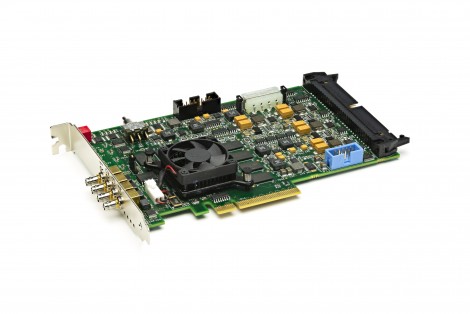
Bitflow Claxon CXP4

Euresys CoaxLink Quad CXP-12
![]()
Active Silicon FireBird Quad CXP-12
Frame grabbers that meet the new CXP-12 specification will be available this year from Active Silicon, BitFlow and Euresys, amongst others. From top to bottom: BitFlow´s Claxon CXP4, Euresys´ Coaxlink Quad CXP-12, Active Silicon´s FireBird Quad CXP-12 board.
With over fifty existing vendors of CoaxPress products, CoaxPress has already become a dominant force in the high performance imaging marketplace. With the advent of CoaxPress 2.0, the future of the interface looks even brighter. One can only wonder at what enhancements a Version 3 of the specification might hold in store for system integrators!
Written by Dave Wilson, Senior Editor, Novus Light Technologies Today


































 Back to Features
Back to Features

